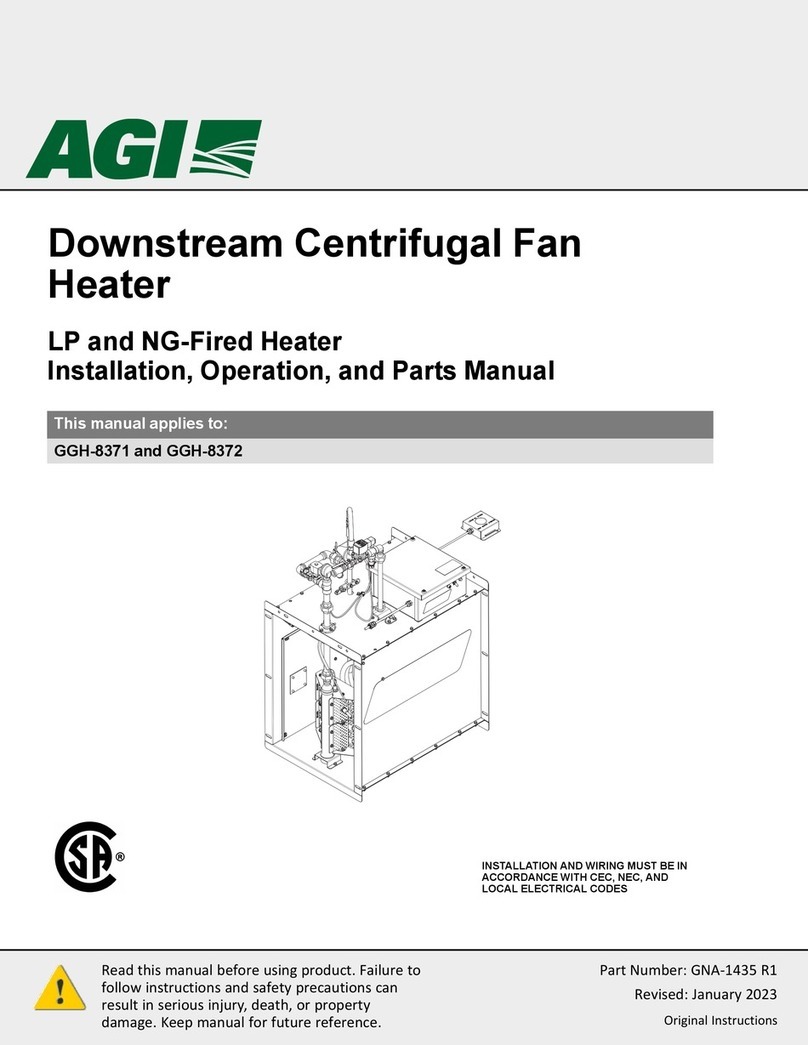
9
Figure 3.
INSTALLATION
AREA= 56 X 11 = 616 SQ IN.
[3974 sq. cm.]
TRANSITION DISCHARGE OPENING
FAN DISCHARGE
AREA = 616 SQ. IN.
[3974 sq. cm.]
4. Fan and add-on heater mounting plane is
the same as your grain bin.*
*On MFS corrugated grain bins with a rolled in
base angle, the fan and heater mounting needs
to be 1½" lower.
Place the fan and heater on a mounting pad
or hang them off the side of the grain bin with
cables. Hanging installations can prevent the
costs and maintenance issues associated
with poured concrete pads. NECO premium
axial fans and axial heaters 24" and greater
are equipped with cable attachment brackets
(located at the handles). Use at a minimum a
3/16" galvanized steel (or stainless steel) wire
rope with appropriate ttings. Make certain the
units are secured to prevent any wind-induced
sideways motion. Centrifugal fans and heaters
can also be hung by cables, but due to their
weight and size the installations usually require
angle brackets and heavier wire rope. Speak to
your dealer or local millwright before attempting
cable installations.
It's very important that the unit is securely
mounted. If you choose a poured concrete slab
to mount your fan and heater on, it is recom-
mended that the slab be approximately 6 inches
thick [152] and 12" [305] wider on each side of
the fan/heater.
TIP: In order to reduce the chances of frost
heave, the pad can be poured on top of several
metal or concrete pilings which extend lower
than average frost depth.
5. Make sure the bin transition discharge is of
an equal area to your fan outlet. (See Figure 3.)
1. Using the appropriate caulk (caulking rated
at 200°F) caulk the Fan/Heater anges. Con-
nect the fan to the heater using nuts, bolts etc.
Hand tighten these fasteners only.
Note: use the appropriate adapter plates to
connect Fans/Heaters and transitions. Do not
weld onto transitions! Welding will cause
distortions which could lead to vibrations
during operation.
2. Place fan and heater on mounting pad.
Make sure the units sit level.
Any bending of the units will twist
the housing and cause future
problems.
Note: Frost heave can cause Fan/Transition
distortion and even vibration.
3. Wrench tighten the fan mounting bolts/nuts,
followed by wrench tightening of the heater
mounting nuts/bolts.
Make sure heater/fan mountings
are secure. A loose fan mounting
will cause the fan to vibrate. Vi-
bration can cause excessive wear
on the fan motor bearings.
4. Wrench tighten all ange fasteners.






























